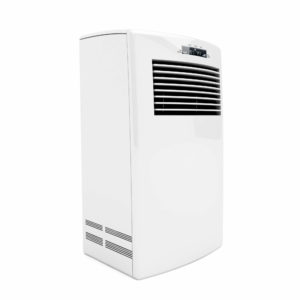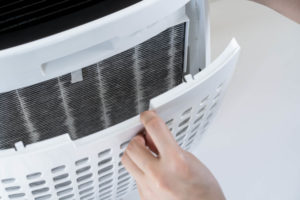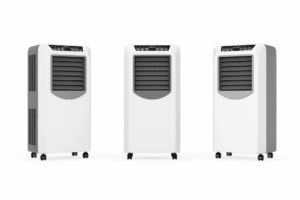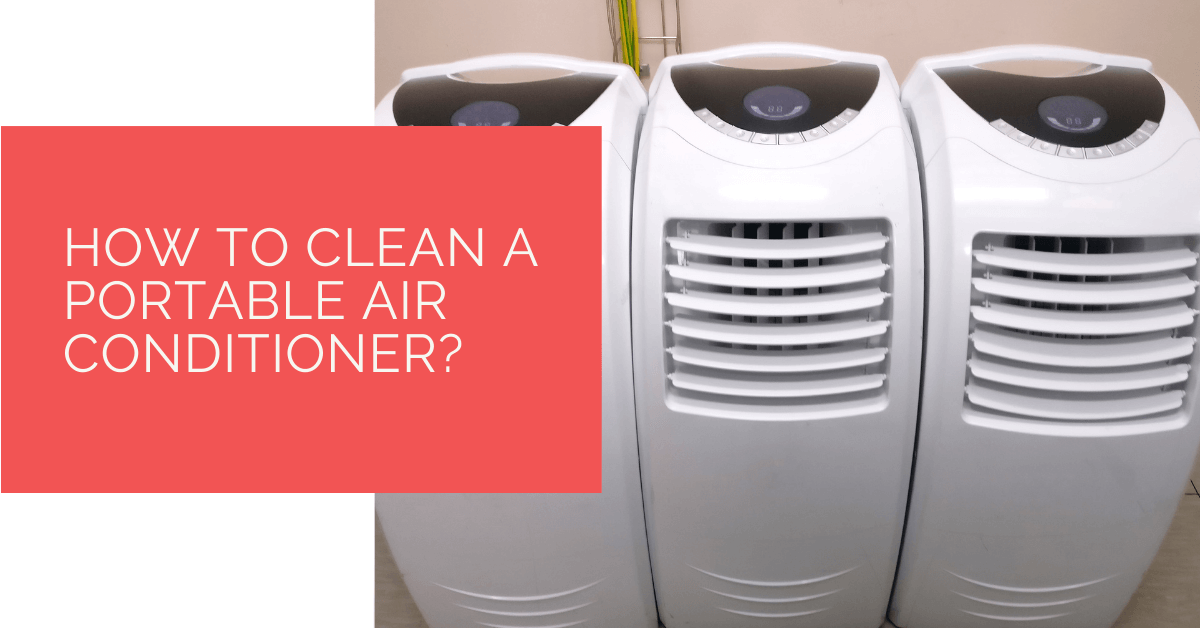If your home does not have a central air conditioning system, a portable air conditioner can help you stay comfortable during the hot summer months. However, it is important to keep in mind that these AC units need regular maintenance to perform at their best and provide optimal cooling. By cleaning your portable air conditioner, you can improve its efficiency and save energy. To help you with this task, we will provide you with step-by-step instructions to ensure that your portable AC units are always in good working order, providing you with a cool and comfortable summer.
Contents
Key Takeaways
- The portable air conditioner market is expected to grow steadily, highlighting the increasing demand for these units as an alternative to central air conditioning.
- Maintaining a portable air conditioner is crucial for its efficiency and longevity, involving cleaning the condenser coils, air filters, exhaust hose, drain pump, and housing regularly.
- Cleaning frequency depends on factors like usage, air quality, and weather conditions, and proper storage during the off-season is essential to ensure the unit’s continued performance.
Getting ready to clean your portable air conditioner
Before you start to clean your portable air conditioner, you’ll need to undertake some preliminary steps. Here’s how you can prepare:
- Place your equipment on a sturdy surface after unplugging it: Do not clean your appliance on expensive flooring for there might be water leakage.
- Gather your tools: A screwdriver, a damp cloth, a bucket or shallow pan, and a clean air filter if it is due for a change.
- Start disassembling your air conditioner: To clean the unit, you will have to unscrew the panels on the back.
You’re now ready to begin the cleaning procedure after having completed these simple steps.

To get to the portable air conditioner coils, you’ll have to remove the outer case. A few units are secured by screws, while others have a simple ‘snap-in and out’ fit.
Maintenance tips
Don’t wait until your portable AC unit is visibly dirty. Schedule regular, thorough cleaning procedures, either by yourself or by hiring an HVAC professional.
A portable AC unit includes several elements that need to be cleaned regularly. The outer housing, drain line, coils, couplings, and air filter are among them.
The following instructions will show you how to clean most portable air conditioners that bear these parts:
1. Cleaning the condenser coils
In the first situation, loosen and remove the screws with the appropriate screwdriver and store them safely. Once you’ve finished cleaning the coils, you’ll need to screw them back in. For exact instructions on opening the outer shell of your AC units, consult your manual.
To clean the crevices between the coils, carefully run a soft brush up and down the coils and wipe the airborne particles that accumulate on the brush with a piece of cloth.
There will be less dust on the brush as the coils become cleaner. If they have fungus or mould, clean them with a mild detergent solution and baking soda. Mix some detergent in water and thoroughly stir in a large mixing bowl.
Thereafter soak a piece of cloth in the solution, squeeze off the excess water, and wipe the surface. You should then rinse off any dirt accumulated on the damp cloth and wipe the coils clean again.
Clean fungus or mould between the coils with a delicate brush dipped in the detergent and soda solution. Let excess water drain out before carefully brushing the areas between the coils. Allow them to dry after rinsing the brush and repeat the process until it’s properly cleaned.
2. Cleaning the filters
The air filters are placed in different places on different portable air conditioners. Some have a single air filter, while others have numerous air filters.
Remove the cover or covers after determining where the air filters are placed in your air conditioner. Detach the filters from the lid with caution. To release the loose dust particles, shake them within a dustbin. Thereafter, clean the dust particles caught between the filter pores using a handheld vacuum cleaner.
If your portable AC has a disposable air filter, make sure you replace it according to the manufacturer’s recommendations. Lastly, if the air filter becomes blocked with debris, it is best to replace it.

3. Cleaning the exhaust hose
Remove the venting hose from your portable air conditioner to clean it. Using a damp cloth or a handheld vacuum cleaner, you should clean around the joints and outside. Thereafter, using the hose, run water through it.
4. Cleaning the drain pump
If your portable AC has a built-in water tank, occasionally drain it completely. To do this you must open the drain pipe and let all of the water out. If you observe that no water is draining, then the drainpipe is most likely plugged.
In such a situation, clear the drain line of your air conditioning unit with a pipe cleaner. The water should start flowing out right away, so be sure to place a bucket underneath the drain line.
Also remember, drain lines have a finite lifespan and may need to be replaced at least yearly.
5. Cleaning the housing
Cleaning the housing of an air conditioner is simple. Dip a piece of fabric in warm water or a weak detergent solution. Then wipe the portable air conditioner’s exterior after wringing out the excess water. Examine the corners, joints, and louvres carefully.
Clean out any debris and dust gathered by running a moist cloth along the length of the louvres.
How often should your portable air conditioner be cleaned?
The frequency of cleaning relies on various factors which include the duration of use, the level of pollutants in the surrounding air, and the weather. If you use your air conditioner regularly or there are a lot of impurities in the air, you may need to clean it every other week.

Keeping the unit in storage during the off-season
If winter is approaching and your portable unit lacks a built-in heater, it’s best to wrap it up and keep it in its original packing. Ensure that you’re draining the gathered water condensation before packing it away.
Run the machine in fan mode for a few hours to dry the excess moisture. As mentioned previously, clean the air filters. Additionally, remove the plastic hose, window bracket, bracket panel adapter, and hose connector.
Ensure that the unit is stored in a cool, dry location away from direct sunlight and other heat sources.
Heat Pump Source: Reliable Heating and Cooling Solutions
At Heat Pump Source, we take pride in our unwavering commitment to serving the UK with top-tier HVAC solutions. From the efficiency of heat pumps and the cool relief of air conditioning to the warmth of boilers, radiators, and underfloor heating, our dedicated team is always at the forefront of innovation. We understand the unique needs of every household and business, and we strive to provide dependable health and cooling products and services that are tailored just for you. Ensuring your comfort and satisfaction is our utmost priority. Whether you have questions, need guidance, or require support, we’re always here to assist. Please don’t hesitate to contact us; we’re eager to be of service.
Parting note
With summer on its way, now is an excellent time to take out your air conditioner and inspect it for any potential problems.
The performance of your portable air conditioner might be harmed by dust, filth, and pollution. There may also be fungus, mould, and bacterial growth, all of which can damage its health. It is therefore imperative to set up a cleaning schedule for your portable AC unit to keep it in perfect shape.
About the Author
At Heat Pump Source, our articles are the product of a collaborative effort among a team of highly skilled HVAC experts. Our dedicated professionals, hailing from diverse backgrounds in heating, ventilation, air conditioning, and refrigeration, contribute their extensive knowledge and experience to every piece of content. This multidisciplinary approach ensures comprehensive coverage. Our commitment is to deliver authoritative, reliable, and tailored advice to meet the unique needs of every household and business across the UK.

